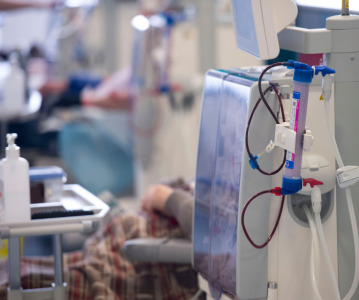Nonalcohol?ic Steatohepa?titis Market to Grow Substantia?lly by 2017

The growing global rate of obesity and diabetes will significantly boost the nonalcoholic steatohepatitis (NASH) market from $233 million in 2012 to $863 million by 2017, at a Compound Annual Growth Rate (CAGR) of 30%, forecasts research and consulting firm GlobalData.
According to the company’s latest report*, the US will have the largest share of the market, contributing $827 million towards global sales, followed by the five major European markets — France, Germany, Italy, Spain and the UK. Currently, there are 29.3 million prevalent cases of NASH across these six major markets.
In addition to obesity and diabetes, another factor that will contribute to the sales growth is the launch of Intercept Pharmaceuticals/Dainippon Sumitomo Pharma’s obeticholic acid in the US and of Genfit’s GFT505 in the US and Europe in Q4 2017, giving them an early foothold in the NASH market space.
Besides these two product launches, GlobalData believes there are two more therapies with the potential to revolutionize the treatment paradigm for NASH in the near future: Gilead’s simtuzumab and Novo Nordisk’s liraglutide (Victoza).
These four novel, potentially first-in-class therapies, which are anti-fibrotic and anti-diabetic, will target subpopulations — obese, diabetic, and healthy donors — within NASH.
Still, there are no approved therapies for the treatment of NASH and there are few therapies in the pipeline that are specific to the condition that appear to be nearing approval over the next 5 years.
Dina Rufo, MS, GlobalData's Analyst covering Immunology, says: “As there is neither cure, nor one specific therapy currently available for NASH, R&D strategies in this market space are complicated. Challenges range from unraveling the pathophysiology of NASH and designing diagnostic tools for more accurate diagnosis and staging, to the design of clinical trials.
“Furthermore, the level of unmet needs for NASH, including both environmental and clinical, is high and requires patient awareness and physician education. These issues compound the reasons why the NASH market space is very sparse. A series of unknowns exist for the disease, due to its heterogeneous nature, and its slow progression poses problems for drug development.”
However, there have been attempts at designing new tools, such as an obesity-related NASH diagnostic and cell apoptosis assessment, to allow for better understanding of drug efficacy.
*Opportunity Analyzer: Nonalcoholic Steatohepatitis (NASH) — Opportunity Analysis and Forecasts to 2017
Related News
-
News Cassava Sciences halts Alzheimer's drug trial after limited progress
Cassava Sciences have drawn a close to their investigations and development of the drug simufilam, which they intended to be used for the treatment of Alzheimer’s disease. -
News US FDA adds haemodialysis bloodlines to devices shortage list
On March 14, 2025, the US FDA published an open letter to healthcare providers citing continuing supply disruptions of haemodialysis bloodlines, an essential component of dialysis machines. -
News Vertex Pharmaceuticals stock jumps as FDA approves non-opioid painkiller
UK-based Vertex Pharmaceuticals saw their stock shares soar as the US FDA signed off on the non-opioid painkiller Journavx, also known as suzetrigine, for patients with moderate to severe acute pain, caused by surgery, accidents, or injuries. -
News Lessons from CPHI Milan 2024: Sunny Intervals for Pharma Manufacturing?
As the 2024 CPHI conference wrapped up in Milan, we caught up with L.E.K. Consulting – a global strategy consulting firm with deep expertise in pharma manufacturing – to discuss evolving market perspectives and business outlook. -
News US BIOSECURE Act passed by US House of Representatives
The controversial act, which has already impacted several foreign companies operating in the US, was passed by the House of Representatives on September 9, 2024. It is now headed for the US Senate before it can be signed into law by President Joe Biden... -
News Pharmaceutical Supply Chain People Moves
The latest appointments, promotions, and structural changes across the pharmaceutical supply chain. -
News Drug prices agreed upon as part of the US Inflation Reduction Act
The Inflation Reduction Act brought into constitution by the Biden administation in 2022, which proposed a drug price negotiation between the government and pharmaceutical companies, has reached it's first agreement. -
News BIOSECURE Act continues to loom over Chinese pharma manufacturers
With the US BIOSECURE Act on its way to passing into legislation, Chinese companies are facing declining revenues within the first half of 2024 as US pharmaceutical and healthcare companies pull their businesses from the country.
Position your company at the heart of the global Pharma industry with a CPHI Online membership
-
Your products and solutions visible to thousands of visitors within the largest Pharma marketplace
-
Generate high-quality, engaged leads for your business, all year round
-
Promote your business as the industry’s thought-leader by hosting your reports, brochures and videos within your profile
-
Your company’s profile boosted at all participating CPHI events
-
An easy-to-use platform with a detailed dashboard showing your leads and performance







.png)